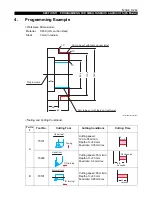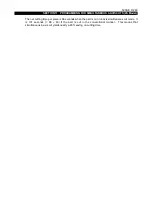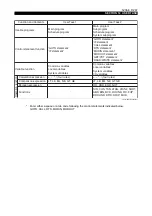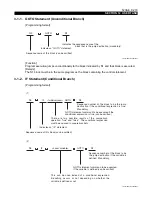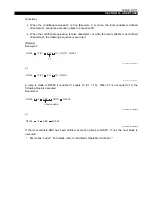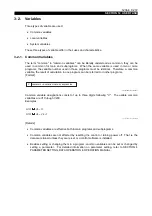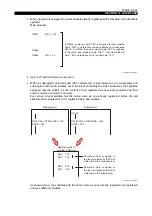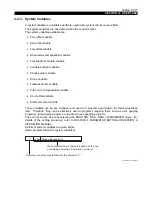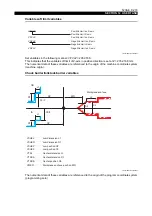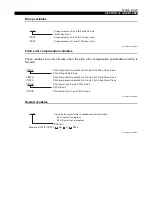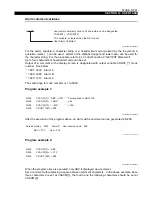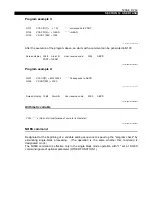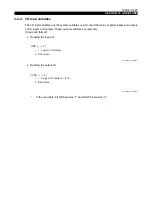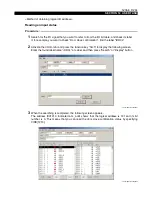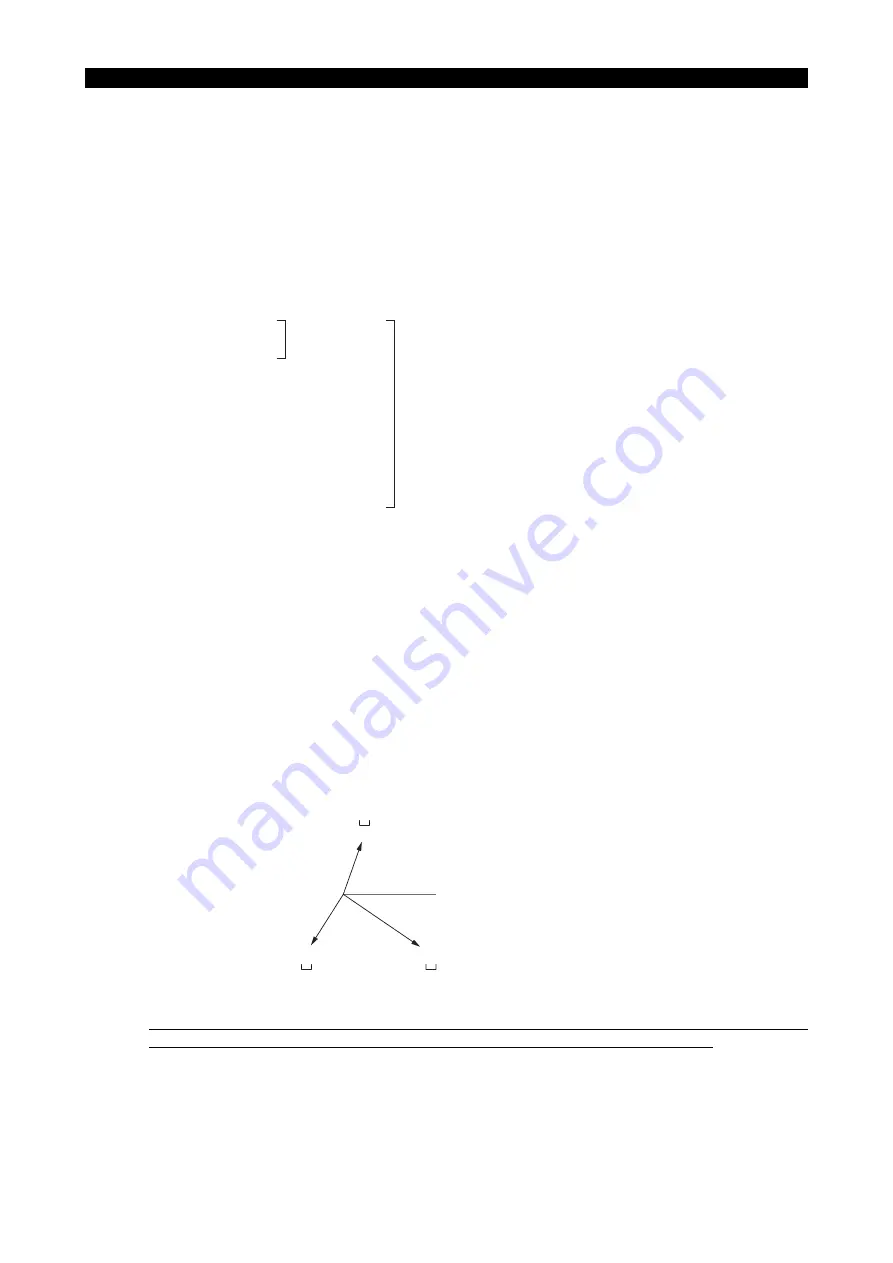
5238-E P-269
SECTION 12 USER TASK
3.
User Task 1
The basic functions of User Task 1 (control statement function, variable function, arithmetic
operation function) are described here.
3-1.
Control Statement Function 1
The User Task can use the following eight control statements. Of these, the GOTO statement and
the IF statement are User Task 1 functions.
LE33013R0301400060001
Program these control statements either at the beginning of a block or right after a sequence name
specified at the beginning of a block (*1). Be sure to enter either a space or a tab code following the
sequence name or a control statement as a delimiter. If there is no delimiter, an alarm occurs.
It is not necessary to enter a space or a tab following an IF statement since it is followed by a left
bracket "[".
LE33013R0301400060002
In other words, any element consisting of more than one address character (A through Z) such as a
sequence name and a control code must be followed by either a space or a tab code.
Next we will consider the GOTO statement and IF statement, which are the control statements of
User Task 1. For details on the control statements of User Task 2, refer to "Control Functions 2".
(*1) Sequence Names
Sequence names are codes for identifying individual blocks in a program, and they consist of
four alphanumerics following address character N.
There are two types of sequence names with the following constructions:
<N> <four numerics>, and
<N> <letter> <three alphanumerics>.
The term "sequence name" as used in this manual refers to both types of sequence name.
* GOTO statement
* IF statement
* RTS statement
* CALL statement
* MODIN statement
* MODOUT statement
* GET/PUT statement
* READ/WRITE statement
User Task 1
User Task 2
N1001
NLAP1
NLAP2
GOTO
GOTO
N2000
Enter a space or tab code.
Example:








